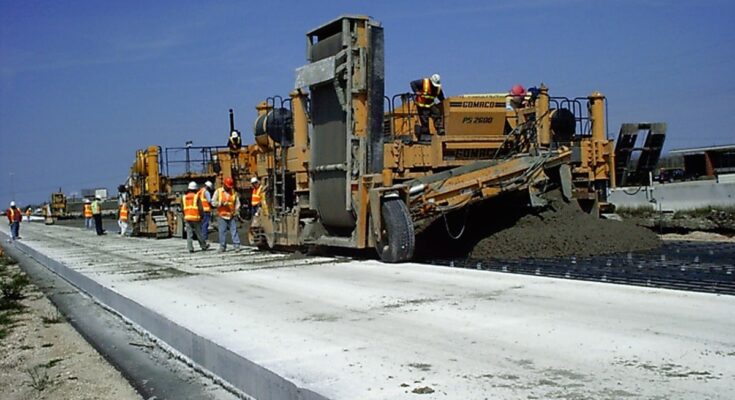Cement-free concrete is a revolutionary material that aims to reduce the environmental impact of traditional concrete by eliminating cement from the mix. Cement production is a significant contributor to greenhouse gas emissions, so finding alternatives is crucial for sustainable construction.
Instead of cement, cement-free concrete uses other binding agents, often derived from industrial byproducts. Some common approaches include the Alkali-Activated Cementitious Materials (AACM) that activate pozzolanic substances like ground granulated blast-furnace slag (GGBS) and pulverized fly ash (PFA) to create a binding agent.
Other approaches include the steel slag using industrial waste and developing low-CO2 additives that can be mixed with excavation materials to create cement-free concrete.
Last year one of the first companies to use cement-free concrete, a first-of-its-kind innovation in the construction industry, was used in a commercial building project in Seattle.
Construction company C-Crete Technologies claimed that the concrete is an environmentally friendly alternative to conventional Portland cement and emits close to zero CO₂ during its manufacture and can also absorb CO₂ from the atmosphere over time.
Approximately 60 tons of cement-free concrete were poured in the foundations and shear walls of the Seattle project, an adaptive reuse development of a 120-year-old historic brick building that used concrete as part of a seismic retrofit.
C-Crete Technologies said that the concrete had great flowability, was pumped and achieved a loading strength of over 5,000 pounds per square inch, greater than the ASTM standard of about 4,000 psi for most residential, commercial and infrastructure concrete applications.
It added that it also meets other key industry standards, shows outstanding durability — such as resistance to freeze-thaw cycles, alkali-silica reactions, and chloride and acid penetrations — and is compatible with conventional concrete admixtures, allowing for easy integration into existing construction practices.
Cement-free Concrete “a game changer” in construction
“We are thrilled to introduce our cement-free concrete, a game-changer in sustainable construction,” said C-Crete’s founder and president, Rouzbeh Savary, PhD.
“Our binder is a drop-in replacement for Portland cement that drastically reduces carbon emissions. Given that our product meets industry standards and has cost-parity with conventional concrete, it opens up an entirely new era in construction.”
Donald Davies, the owner of the Seattle building and chair of Building Transparency, a nonprofit dedicated to enabling the building industry to address embodied carbon’s role in climate change said:
“As a developer, a structural engineer of 33 years, and a leader in low-carbon construction, I’m seeing many lower-carbon concretes being discussed.
“I’m seeing exciting advancements, but few are ready to scale into production the way C-Crete can now. No-cement, and low-carbon concrete isn’t just a pipe dream. It is real, it is now, and it works. This project proves it’s possible, today.”
C-Crete Technologies says that Portland cement is responsible for around 7 percent of total CO2 emissions worldwide. If used instead, the new material can help substantially reduce the environmental impact of the construction industry.
Each ton of C-Crete binder that replaces Portland cement prevents approximately 1 ton of CO2 emissions. Furthermore, the product utilizes a suite of natural minerals and industrial by-products, ensuring an abundant feedstock.
The company says that it looks forward to collaborating with architects, designers, general contractors, ready-mix companies, building owners and decision-makers for infrastructure projects to accelerate the adoption of its sustainable concrete.



